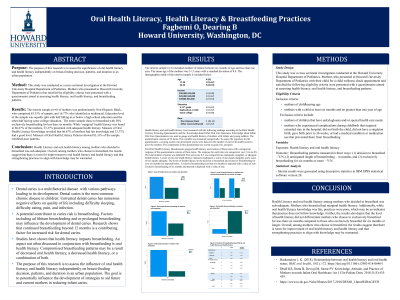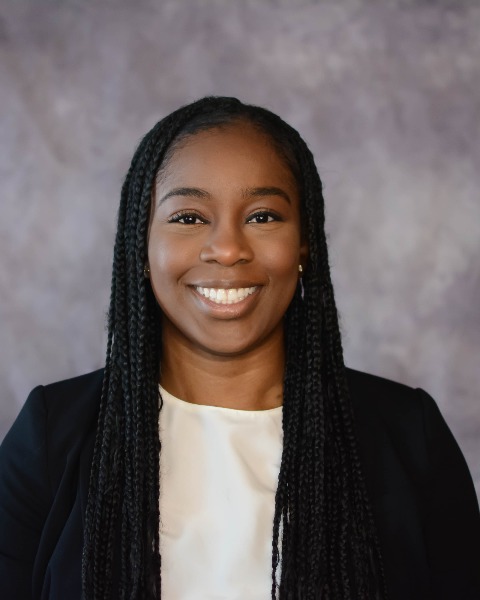Caries
400 - The Impact of Oral Health Literacy and Health Literacy on Breastfeeding Practices


Oluwemimo A. Fagbemi, DDS
PGY2
Howard University, Washington, D.C.
Howard University
Washington, District of Columbia, United States- BD
Bianca Dearing, DDS, PhD, MS, DDS, PhD, MS
Howard University,
- BD
Bianca A. Dearing, DDS, PhD, MS
Associate Professor
Howard University
Washington, District of Columbia, United States - LB
LaToya Barham, DDS, FAAPD, FICD
Program Director
Howard University
Washington, District of Columbia, United States
Presenting Author(s)
Co-Author(s)
Research Mentor(s)
Program Director(s)
Purpose: Dental caries is the most common chronic disease in children. Research shows that continued breastfeeding beyond 12 months is a contributing factor for increased risk for caries. Untreated caries has negative effects on quality of life, including difficulty sleeping, eating, and possibly diffuse infection. Studies have shown that health literacy impacts breastfeeding practices. An aspect of health literacy is oral health literacy. Compromised breastfeeding practices may be a result of limited oral health literacy, health literacy, or a combination of both. The purpose of this research is to assess the influence of oral health literacy and health literacy independently on breast-feeding patterns, frequency, and duration in various urban ethnic groups.
Methods: A cross sectional survey was conducted at Howard University Hospital, Department of Pediatrics. The Brief Health Literacy Screener Scale, Knowledge Attitudes Scale, and the CDC Breastfeeding Questionnaire were administered to parents of infants to assess their breastfeeding practices, level of oral health literacy, and health literacy.
Results: Preliminary results revealed the following: All participants of the interim sample breastfed for under six months and had marginal health literacy. Seventy-five percent of the interim sample had “fair” oral health literacy knowledge, 50% had “fair” attitude, and 50% had “poor” practices.
Conclusion: The current data suggests that poor health literacy may negatively impact breastfeeding practices. However, given the limited size of the interim sample, additional study participants are needed to adequately answer the research question. Continued recruitment is planned to reach adequate power to answer the research question.
Identify Supporting Agency and Grant Number:

.jpg)